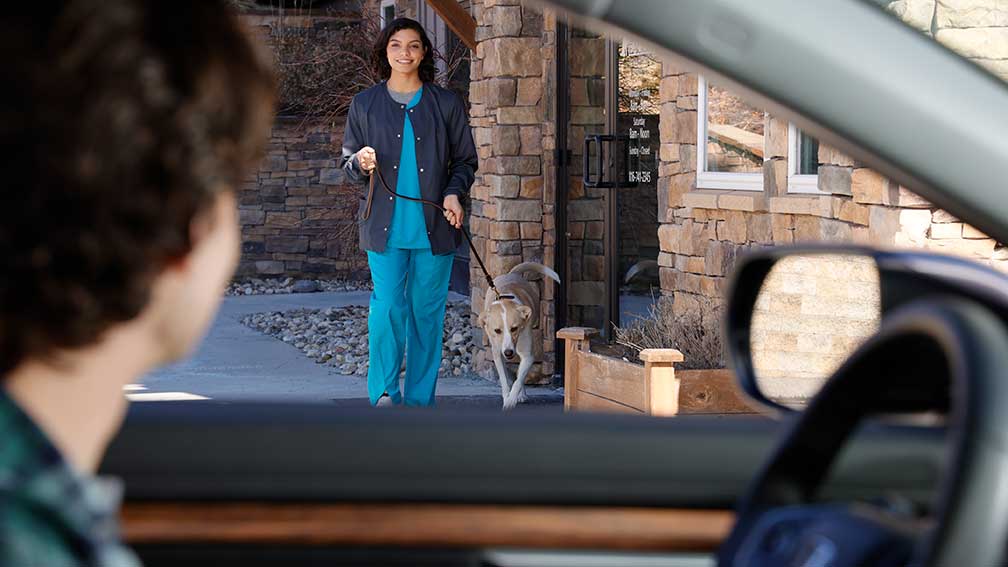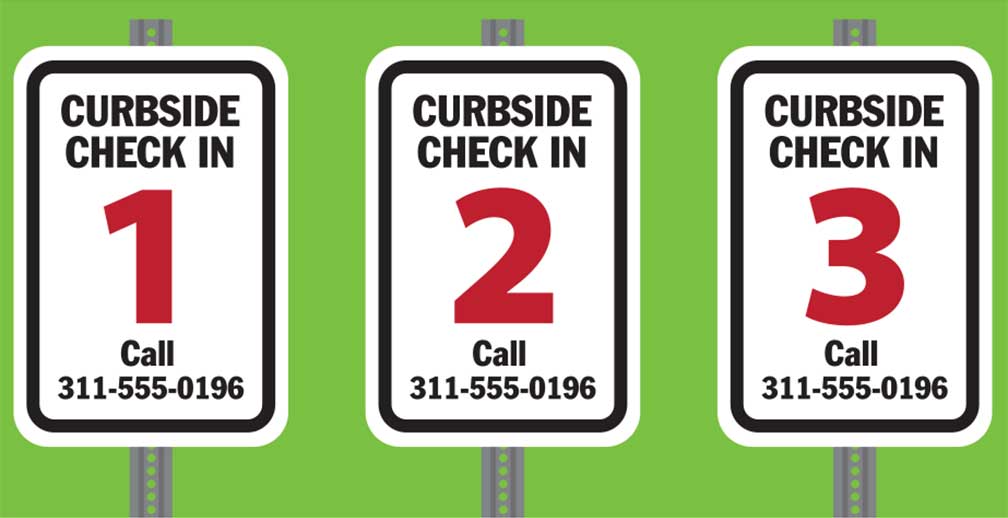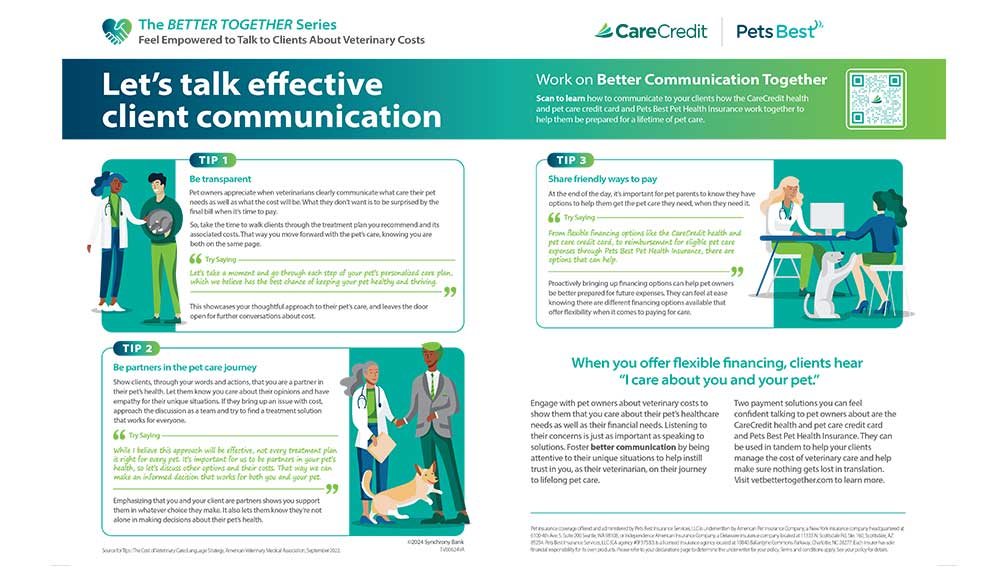Curbside Care Best Practices for Veterinarians: Dos and Don'ts
Veterinary teams can benefit from continuing to offer curbside care services in an elevated, client-centric manner. Learn the dos and don'ts of modern curbside service.
By Brian Conrad
Certified Veterinary Practice Manager
Posted Feb 07, 2025 - 5 min read

Curbside care became a necessary lifeline for veterinary clinics during the COVID-19 pandemic by offering essential care while maintaining safety. Without warning, veterinary professionals were thrust into a new reality, forced to adopt massive changes and rapidly change guidelines.
Although we’ve reached a point of relative post-pandemic safety, several aspects of curbside care remain viable and valuable. However, as veterinary curbside care evolves, team members must ensure that the client and pet experience is positive.
Here are curbside care tips for veterinarians to help provide exceptional service before, during and after each visit.
Before the Client and Pet Arrives
Setting the stage for a smooth visit starts with thoughtful planning, clear communication and anticipating your client’s common needs.
Do communicate before the visit
Communication with pet owners is key. Update clients about curbside services and explain their care options when they call to schedule. If they wish to proceed, provide details on what to expect, including where to park (with clear signage), how to contact the office on arrival, whether to go inside and payment options.
Don’t make clients fill out unnecessary paper forms
Curbside service is designed for convenience and to reduce physical touchpoints during the visit. Paper forms take up unnecessary time and clients must handle them physically — a concern for those using curbside for medical reasons. Leverage your practice management software or client communication platform so forms can be sent and signed digitally, and let clients complete a pre-visit check-in for efficiency.
Do make the most of digital tools
Veterinary practices have multiple communication channels at their disposal. Opt for digital communications using your website, social media and/or email to distribute information about curbside services. Consider creating a video to help clients visualize the visit process or a checklist with online forms they can fill out in advance to save time.
Don’t keep clients waiting
When clients arrive and you give an expected wait time, do your best to stick to that time. A few extra minutes of waiting can feel like an eternity when you aren’t in the physical lobby and can leave you feeling forgotten or neglected. If the wait time will be longer than expected, update the client with a call or text.
Do offer financial options
Clients have enough on their plates, and may be worrying about how they’ll pay for an upcoming visit. Share your CareCredit custom link on your website or via email during pre-visit communications. The link provides an all-in-one, contactless way for clients to learn about, apply for, and if approved, pay with the CareCredit credit card.*
When Your Clients Arrive
Creating a positive experience for clients and pets involves exceptional service, purposeful messaging and seizing opportunities to educate while they wait.
Do make curbside visits easy, convenient and comfortable
The little things your team provides can make all the difference to a client. Strive for top-tier service — answer client calls or texts quickly, explain who will get their pet and how long they can expect to wait and assure them that their pet will be well cared for inside. For an extra touch, offer pet owners a hand-sanitizing wipe or mini bottle when approaching their vehicle.
Don’t blindside clients medically or financially
After examining a pet during a curbside visit, ensure a team member thoroughly explains the findings, recommendations, alternative treatment options, expected outcomes, estimated costs for the day’s services and budget-friendly payment options, such as flexible financing with the CareCredit credit card.* When possible, email or text clients an estimate specific to the visit type when they schedule. For example, an ear visit estimate could include an exam, cleaning, cytology and medication. Clients who are surprised with services they didn’t expect or agree to can be confused and react negatively.
Do expand opportunities to educate
Veterinary clinics are perpetually busy, and client education can be time-consuming, but you can integrate education opportunities into curbside services. Try offering informative hold messages or edutainment with a printout of links or QR codes to provide clients with informative or fun content they can enjoy while waiting.
Do provide consistent cost and payment discussions
Establish a protocol for when, where and who communicates fees to clients, so they know what to expect. Share the online payment calculator to help client see their estimated monthly payment with the CareCredit credit card. Clients can see if they prequalify, apply, and, if approved, pay via your practice's custom link.
During the Curbside Exam
Make these unique visits seamless by fostering trust, communication and client engagement.
Don’t forget to be personal
Veterinary medicine is all about relationships, but curbside service can sometimes feel impersonal. Combat this feeling by greeting clients warmly as you approach their vehicle and always using team member, client and pet names.
Do let clients participate in curbside visits
Clients using curbside for exams anxiously await information from the veterinary team. Offer pet owners the opportunity to participate via video chat, telemedicine platform, FaceTime or speakerphone so they can see and hear what’s happening.
Don’t be camera-shy
If video chat or FaceTime are feasible options for curbside visits, use them. Seeing clients face-to-face is invaluable for maintaining relationships and matters more than your preference to avoid the camera.
Do communicate and educate during visits
Curbside veterinary care can breed misunderstandings, but you can combat them and build trust with clear client communication, detailed information and education about findings and recommendations. Look or listen for emotional cues during the discussion to steer the conversation, address concerns and encourage questions.
Don’t forget to reinforce the value of your care
Explain precisely to pet owners why you’re recommending fees and services and how each benefits their pet, so clients understand their value. If you’re using a video feed for the visit, explain things as you do them.
Do slow down
Speeding through a curbside visit to play catch-up can end up slowing you down further because clients may feel rushed, which can cause confusion. Take time to explain in detail and answer questions while they are fresh in the client’s mind.
After the Curbside Vet Visit
Ensure every post-visit interaction leaves clients feeling informed, valued and supported.
Do return the pet with care
Ensure team members return pets to their vehicles clean and securely double-leashed or crated. Let them know what happened during the visit and reiterate the pet’s treatment plan. Write discharge instructions on paper or in electronic format so clients have a reference when they get home.
Don’t overlook follow-up scheduling
To minimize phone calls, trips to the client’s car or forgotten rechecks, try to schedule follow-ups during the main visit or when the client is still on the phone, or consider adopting online scheduling software — simply send a link to the scheduler alongside your follow-up recommendation.
Don’t miss the opportunity for loyalty-building
Every visit is an opportunity to bond clients to the practice. After curbside visits, provide a list of your services and conveniences, such as an online pharmacy, food delivery, telehealth or mobile payments, which can make their lives easier.
Do follow-up after the appointment
Follow-up for curbside visits should be the same as — or more intensive than — traditional appointments. Use these calls or emails as an opportunity to check on the pet, thank them for coming or solicit online reviews. You can also use the follow-up to send test results, link to educational resources or ask for their pet’s story or photo to share on social media. And if the client has questions or requests during the follow-up process, ensure a team member reaches out with answers as soon as possible.
Do offer contactless payment
Contactless payments are practical for curbside visits. Let clients know they can pay with the CareCredit credit card online by sharing custom links via email or posting QR codes on signage and discharge instructions. Practices can also accept payments with CareCredit via Provider Center or Practice Management Software that has CareCredit integrated.
Mastering Curbside Veterinary Care
Curbside care has become a critical aspect of high-quality veterinary service. As you refine your curbside care best practices and protocols, remember that clear communication, thorough preparation, client education and convenience are keys to a seamless experience, especially when it comes to payment.
Learn more: View additional curbside care dos and don'ts from CareCredit in this interactive guide.
A Veterinary Financing Solution for Your Clinic
Looking for a way to help your clients manage the cost of care that is needed for their pets? Consider accepting the CareCredit health and pet care credit card as a financing solution. CareCredit is a flexible financing solution that allows cardholders to pay for veterinary services over time,* while you get paid within two business days.
When you accept CareCredit, you will receive a custom link that allows clients to see if they prequalify with no impact to their credit score. Those who apply, if approved, can take advantage of special financing on qualifying purchases.* The entire process is mobile-friendly, leaving you free to focus on providing the care pets need.
Learn more about the CareCredit credit card as a veterinary financing solution or start the provider enrollment process by filling out this form.
Author Bio
CareCredit worked in conjunction with Brian Conrad, CVPM, practice manager at Meadow Hills Veterinary Center in Kennewick, Washington, and past president of the Veterinary Hospital Managers Association.
Ready to help more patients and clients get the care they want and need?
Get StartedReady to help more patients and clients get the care they want and need?
Get Started* Subject to credit approval. Minimum monthly payments required.
The information, opinions and recommendations expressed in the article are for informational purposes only. Information has been obtained from sources generally believed to be reliable. However, because of the possibility of human or mechanical error by our sources, or any other, Synchrony and any of its affiliates, including CareCredit, (collectively, “Synchrony”) does not provide any warranty as to the accuracy, adequacy, or completeness of any information for its intended purpose or any results obtained from the use of such information. The data presented in the article was current as of the time of writing. Please consult with your individual advisors with respect to any information presented.
© 2025 Synchrony Bank.




